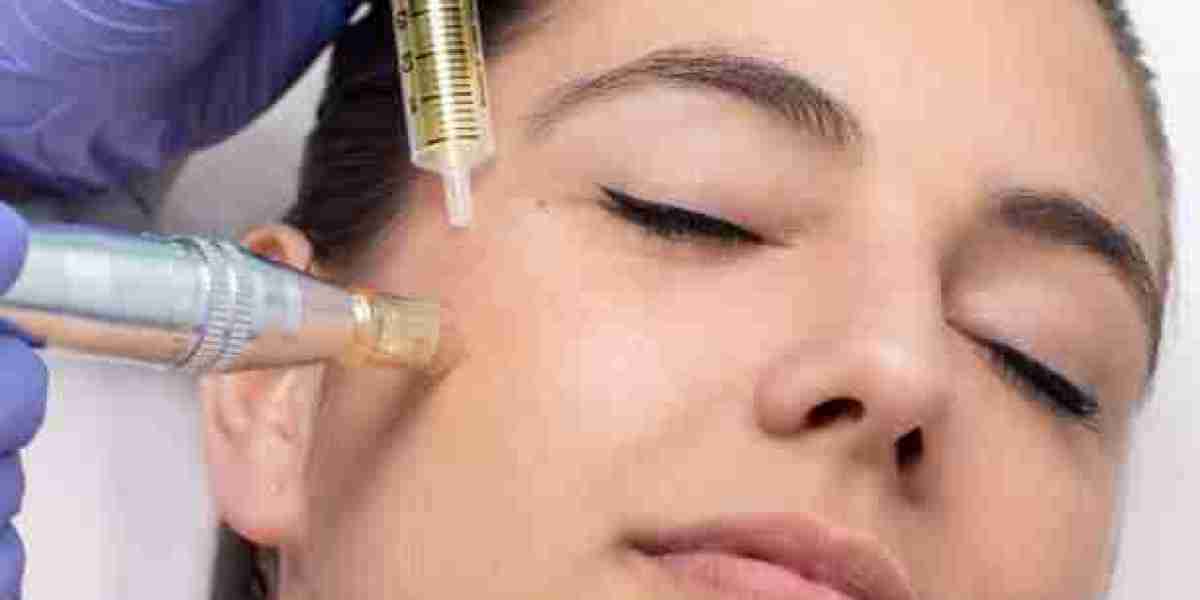Achieving radiant, youthful skin is no longer just a dream—it’s a reality, thanks to advancements in skin rejuvenation treatments. Among the most popular and effective options available today is the Derma pen. Touted for its ability to improve texture, tone, and elasticity, this minimally invasive technique is quickly becoming a skincare favorite. But what exactly makes it so powerful? Let’s uncover the science that drives the glow.
Understanding the Derma Pen Technology
What Is the Derma Pen?
The Derma Pen is a state-of-the-art microneedling device used to treat a variety of skin concerns. It works by creating thousands of microscopic punctures in the top layer of the skin using fine needles. This stimulates the body's natural healing response, triggering collagen and elastin production.
Unlike traditional dermal rollers, the Derma Pen offers adjustable needle depths and a vertically controlled stamping mechanism, allowing for precision and minimal trauma to the skin.
How the Derma Pen Stimulates Natural Healing
Collagen Induction Therapy (CIT)
The core science behind the Derma Pen lies in a process called Collagen Induction Therapy. As the device moves across the skin, it creates controlled micro-injuries. In response, the body goes into healing mode, producing fresh collagen fibers that help plump the skin and smooth out imperfections.
This natural repair mechanism enhances skin strength, resilience, and appearance—delivering that coveted youthful glow.
Enhanced Product Absorption
Another scientific benefit of the Derma Pen is improved topical absorption. The micro-channels created during treatment act as direct pathways for serums and active ingredients, allowing them to penetrate deeper and work more effectively.
Whether you're using hyaluronic acid, peptides, or antioxidants, the penetration rate can increase by up to 90% after a session—amplifying results.
What Skin Conditions Can It Improve?
Acne Scars and Large Pores
The Derma Pen is particularly effective in breaking down scar tissue and encouraging new skin growth. Over time, acne scars become less noticeable, and pore size is visibly reduced.
Fine Lines and Wrinkles
By stimulating new collagen, the skin becomes firmer and smoother. This naturally reduces the appearance of fine lines and wrinkles, especially around the eyes, mouth, and forehead.
Hyperpigmentation and Uneven Skin Tone
The treatment also assists in cell turnover, which helps fade dark spots and discoloration. Individuals with melasma or sun damage often find improved clarity and brightness in their complexion.
Why the Glow? The Science of Skin Radiance
Oxygenation and Blood Flow
As the skin repairs itself post-treatment, increased blood flow and oxygenation occur. This brings vital nutrients to the surface, giving the skin a fresher, pinkish glow that lasts for days—and often gets better with each session.
New Skin Cell Formation
The Derma Pen triggers the production of new skin cells, replacing the dull and damaged surface with smoother, brighter skin. It’s this regenerative effect that contributes to the signature "Derma Pen glow."
What to Expect During a Session
The Procedure
A session typically begins with a thorough cleansing of the skin followed by the application of a numbing cream to minimize discomfort. The Derma Pen is then gently passed over the target areas, usually lasting about 20–30 minutes depending on the treatment area.
Sensation and Recovery
Most users describe the sensation as a light prickling or tingling. Post-treatment redness is normal and often subsides within 24–48 hours. Proper hydration and sun protection are essential to support healing.
Is Derma Pen Safe for All Skin Types?
Inclusive and Customizable
One of the reasons the Derma Pen is so popular is its suitability for nearly all skin tones and types. Unlike laser treatments, there is a much lower risk of pigmentation changes in darker skin tones.
Thanks to adjustable needle depth and controlled application, the treatment can be customized for sensitive areas like under the eyes or around the lips.
How Many Sessions Are Needed?
Gradual, Long-Lasting Results
Most individuals begin to see noticeable results after just one session. However, for optimal benefits—especially for deep acne scars or wrinkles—a series of 3 to 6 treatments spaced 4 to 6 weeks apart is often recommended.
With each session, collagen levels increase, leading to more consistent and long-lasting improvement.
Aftercare and Skin Maintenance
Post-Treatment Tips
Avoid sun exposure for at least 48 hours
Use a gentle, hydrating cleanser
Skip active ingredients like retinol or acids for a few days
Apply a hyaluronic acid serum for hydration
Stay hydrated and maintain a balanced diet
These simple aftercare steps will help prolong the effects and ensure a safe recovery.
Comparing Derma Pen to Other Treatments
Derma Pen vs. Laser
While lasers rely on heat and light energy to resurface the skin, Derma Pen uses mechanical stimulation. This makes it safer for a wider range of skin types and involves less downtime.
Derma Pen vs. Chemical Peels
Chemical peels exfoliate the top layers of skin using acid-based solutions. While they’re great for superficial issues, Derma Pen penetrates deeper and offers more comprehensive collagen remodeling.
Who Should Avoid Derma Pen?
Precautions and Contraindications
Though generally safe, there are some situations where the treatment is not advised:
Active acne or skin infection
Severe eczema or rosacea
Blood clotting disorders
Use of certain medications like Accutane
Pregnancy or breastfeeding (consult your physician)
Always consult a qualified professional before beginning any treatment.
? FAQs
❓ How long does it take to see results from Derma Pen?
You may notice brighter, smoother skin within a few days, but significant improvements in scars, lines, or pigmentation generally appear after 3–4 weeks. Results build with each session.
❓ Can I wear makeup after a Derma Pen treatment?
It’s best to wait at least 24–48 hours before applying makeup to allow the skin to heal and reduce the risk of irritation or infection.
❓ Is the Derma Pen painful?
Thanks to the application of a numbing cream beforehand, most people find the treatment very tolerable. You may feel a mild prickling or warmth, but not significant pain.
❓ How often should I get Derma Pen sessions?
For general skin maintenance, once every 6–8 weeks is ideal. For specific concerns like acne scars, a more structured series spaced 4 weeks apart may be recommended initially.
Final Thoughts
The Derma Pen isn’t just another skincare trend—it’s a scientifically backed tool that harnesses your body’s own healing mechanisms to improve texture, tone, and radiance. With minimal downtime, visible results, and wide-ranging applications, it’s no wonder this microneedling device is gaining popularity across the globe.



